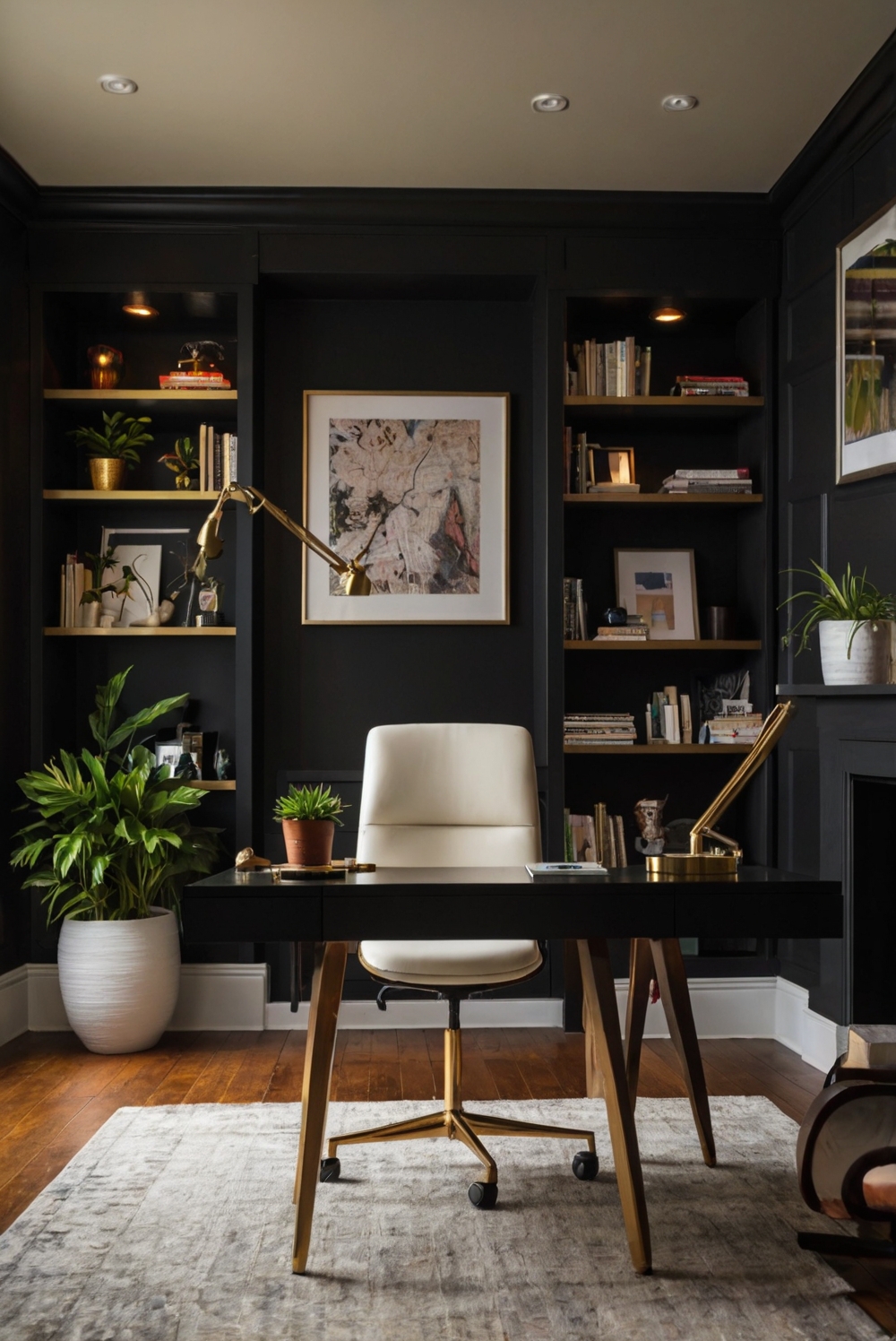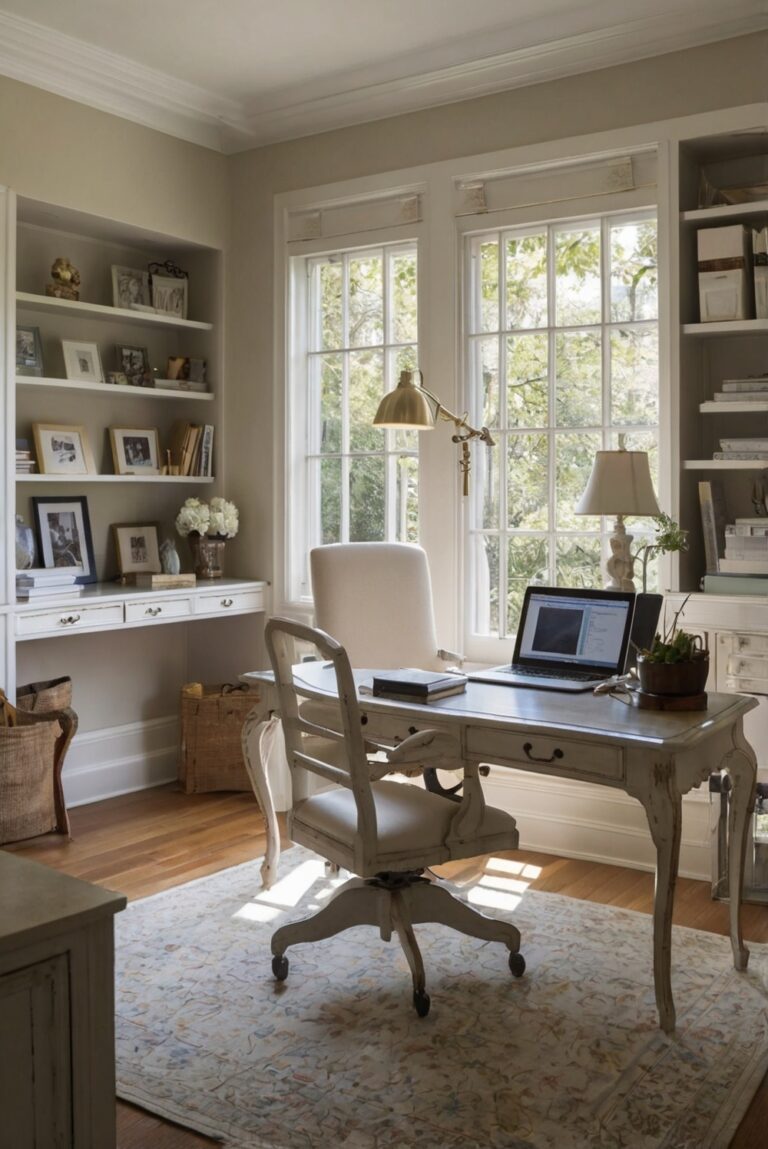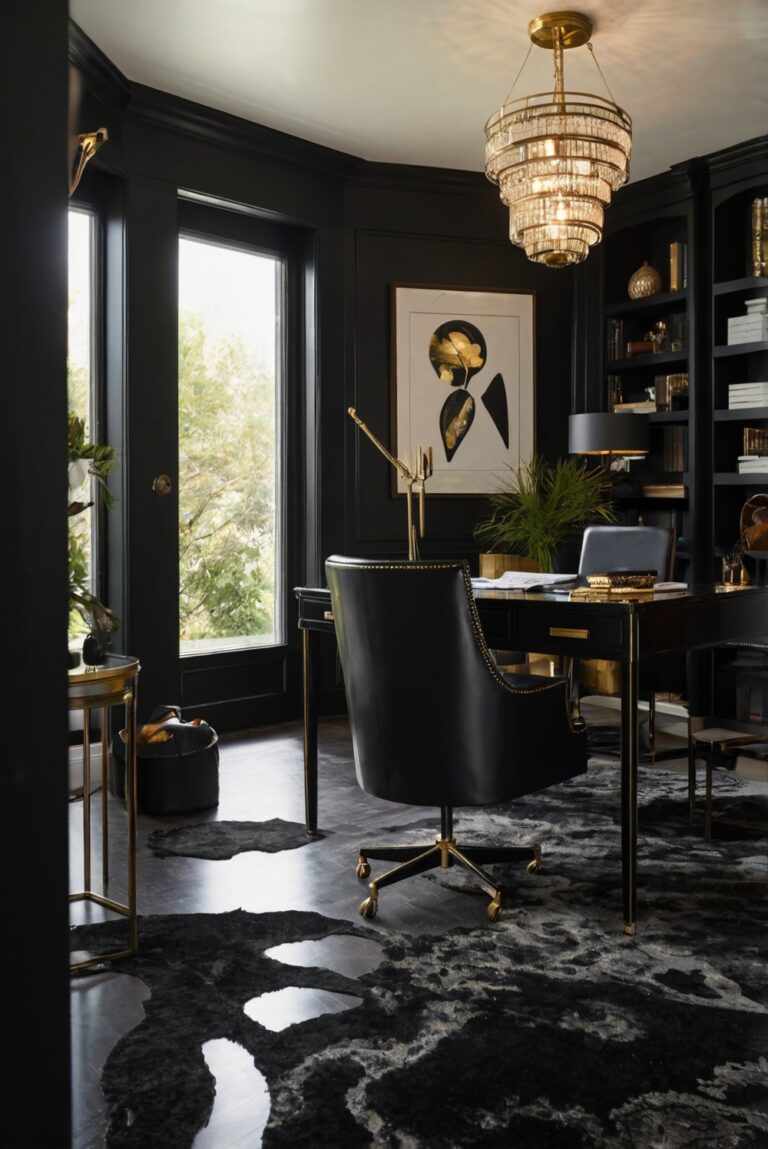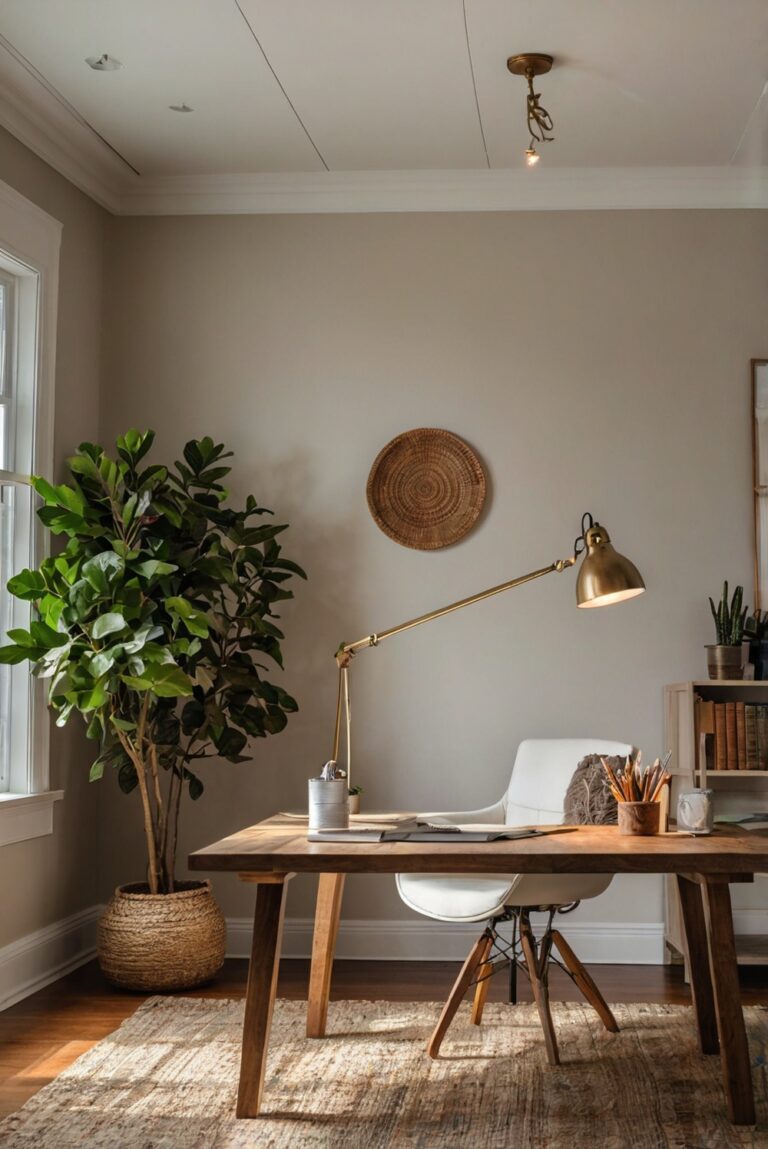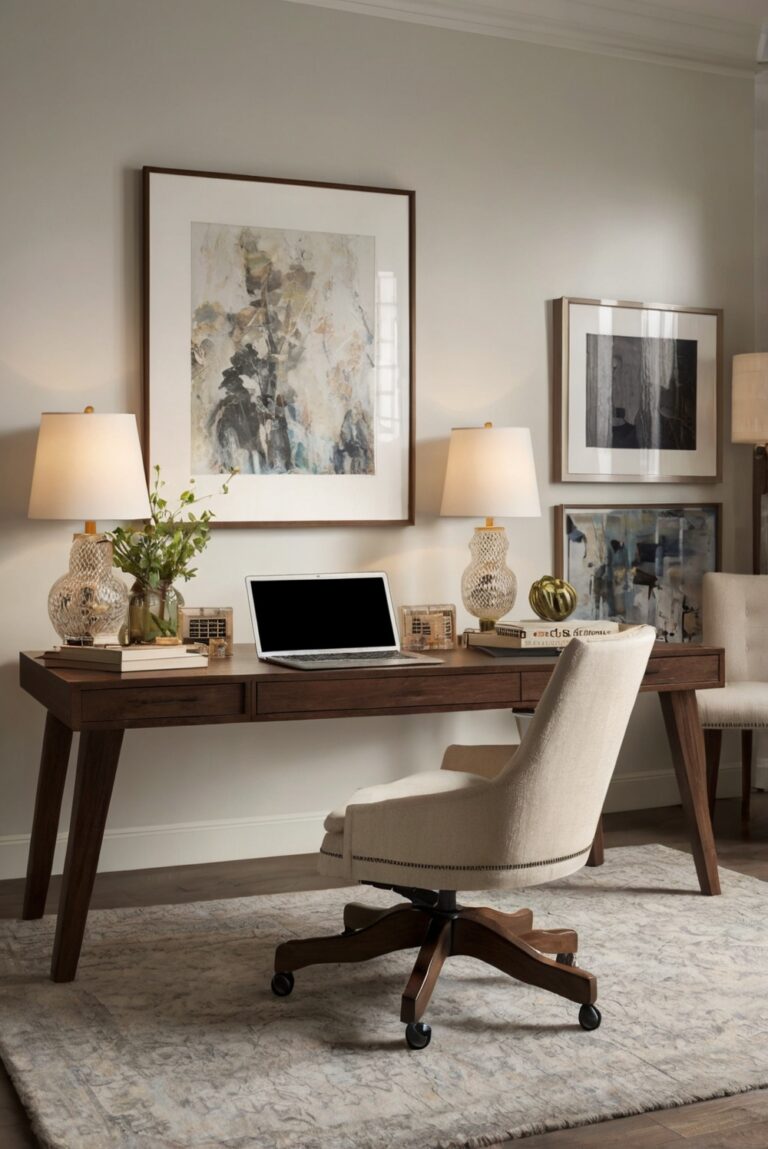Ready to elevate your home office with the perfect lighting temperature? Discover daily interior designer tips to create a productive and cozy workspace in a few easy steps.
Choosing the right lighting temperature for your home office is crucial for creating a productive and comfortable work environment. To do so, consider the following steps:
1. Determine the primary function of your home office: Whether it’s for work, study, or creative projects, the lighting temperature should match the task at hand.
2. Opt for cooler temperatures (5000-6500 Kelvin) for workspaces requiring high concentration and focus, such as reading or computer work.
3. Warm temperatures (2700-3000 Kelvin) are better suited for relaxation and socializing areas within the office.
4. Balance natural and artificial lighting sources to avoid eye strain and create a pleasant atmosphere.
5. Test different lighting temperatures before finalizing to find the perfect ambiance for your home office.
Moreover, organizing your home office space with proper lighting can enhance the overall home interior design and improve productivity levels.
For more specific advice on lighting temperatures according to the room’s function or recommendations tailored to your preferences, consider consulting professional home interior designers or using online tools for interior design space planning.
Consider Natural Light:
One of the most important factors to consider when choosing the right lighting temperature for your home office is the amount of natural light available. Natural light not only helps reduce eye strain but also creates a more pleasant and productive work environment. Position your desk near a window to take advantage of natural light during the day. Consider using sheer curtains or blinds to control the amount of light entering the room.
Understand Color Temperature:
When it comes to artificial lighting, color temperature plays a crucial role in setting the right ambiance in your home office. Color temperature is measured in Kelvin (K) and ranges from warm to cool. Warm light (2700K-3000K) creates a cozy and inviting atmosphere, ideal for relaxation. Cool light (3500K-4100K) is energizing and promotes focus and productivity. Consider the type of tasks you will be performing in your home office when selecting the color temperature.
Choose Adjustable Lighting:
Having the flexibility to adjust the lighting temperature in your home office is essential. Consider investing in adjustable LED lights or smart bulbs that allow you to change the color temperature based on your needs. This versatility is especially useful for tasks that require different levels of concentration throughout the day. Experiment with different color temperatures to find the right balance for your workspace.
Consider Your Work Environment:
When choosing the right lighting temperature for your home office, it is essential to consider the overall work environment. If your work involves creativity and brainstorming, warmer light temperatures may be more conducive to generating ideas. On the other hand, if you need to focus on detailed tasks or reading, cooler light temperatures can help improve concentration and reduce eye strain.
Seek Professional Advice:
If you are unsure about the best lighting temperature for your home office, consider seeking advice from a professional lighting designer. They can assess your workspace, understand your lighting needs, and recommend the most suitable lighting solutions. A lighting designer can also help you create a lighting plan that enhances the functionality and aesthetics of your home office.
1. What is lighting temperature, and why is it important for a home office?
Lighting temperature refers to the color appearance of light emitted by a source, measured in Kelvin (K). The right lighting temperature can significantly impact your home office environment. For example, cooler temperatures (5000K-6500K) can boost productivity and alertness, while warmer temperatures (2700K-3000K) create a cozy and relaxing atmosphere. Choosing the correct lighting temperature is crucial for reducing eye strain, enhancing focus, and creating a comfortable workspace conducive to productivity.
2. How can I determine the best lighting temperature for my home office?
To choose the right lighting temperature for your home office, consider the tasks you perform in the space. For activities requiring focus and attention to detail, such as reading or working on a computer, opt for cooler temperatures. Conversely, if your home office is a place for relaxation or creative pursuits, warmer temperatures may be more suitable. Experiment with different Kelvin values and observe how they affect your mood and productivity to find the ideal lighting temperature for your specific needs.
3. What are the different types of lighting fixtures that offer adjustable color temperatures?
Several lighting fixtures on the market provide adjustable color temperatures to cater to various preferences and activities in a home office. LED desk lamps with color-changing capabilities allow you to switch between warm, neutral, and cool tones to suit different tasks. Smart lighting systems, such as Philips Hue or LIFX, offer customizable color temperature settings that can be controlled remotely via a smartphone app. Floor lamps and ceiling lights with adjustable Kelvin settings provide flexibility in creating the desired ambiance and lighting conditions in your home office.
4. Are there any specific guidelines or recommendations for selecting the right lighting temperature for a home office?
When choosing the lighting temperature for your home office, it is essential to strike a balance between functionality and aesthetics. The Illuminating Engineering Society (IES) recommends a color temperature of around 3000K for general office lighting to promote focus and visual comfort. Task lighting, such as desk lamps or under-cabinet lights, should have cooler temperatures (4000K-5000K) to enhance task performance. Additionally, consider the color rendering index (CRI) of the light source, which indicates how accurately colors appear under the light, with higher CRI values (80 or above) being preferable for tasks requiring color accuracy.
5. How can natural light be integrated with artificial lighting to create an optimal lighting environment in a home office?
Natural light plays a crucial role in enhancing the overall lighting quality and mood in a home office. Positioning your workspace near a window to maximize natural light exposure can help reduce reliance on artificial lighting sources during the day. To complement natural light, consider using adjustable artificial lighting fixtures that mimic daylight conditions. Task-specific lighting, such as adjustable desk lamps or overhead lights with dimming capabilities, can be combined with natural light to create a dynamic lighting environment that adapts to different tasks and times of day. Experimenting with the interplay of natural and artificial light sources can help you achieve a well-lit and comfortable home office setting.

